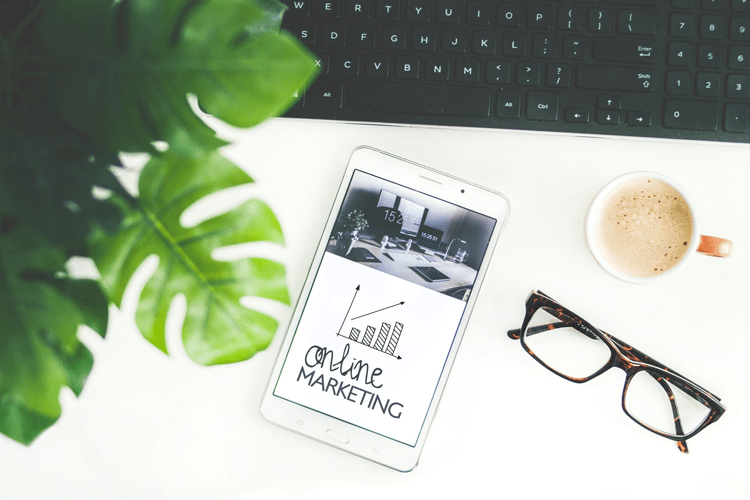Wikipedia defines influencer marketing as a form of marketing focused on specific key individuals rather than the target market as a whole. It works by identifying the individuals who have influence over potential buyers and orients marketing activities around these influencers.
Influencer marketing has existed for a long time now, seeing brands work hard on identifying and engaging with their relevant influencers, to drive preference beyond what direct consumer communication could.
A little over a decade ago, something changed. The internet, already having permeated deep into the consumer’s lives, started becoming more conversational. It started with blogs, forums and communities where people could express opinions, connect and share. Then social networks of all kinds came along, giving people more freedom to share, be it in 140 character posts, blog posts, images, videos or an amalgamation of them all.
A little further down the line we saw another game changer arrive on the scene: smartphones. With mobile internet speeds increasing, costs reducing and smartphones becoming more and more accessible, people started sharing likes, dislikes, comments, reviews, rants and raves directly with each other, in real time! The paradigm of influence had changed. Anyone with an opinion and access to the internet could now influence others, without having to be an expert in the domain or have the ear of the media.
As with any other medium, new influencers arose in the online space. Prominent bloggers, Twitterati, Instragrammers, Snapchatters and all sorts of celebrities on all kinds of networks. These were a mix of offline influencers gone online and those who had established their influence purely in the digital space.
New methods of measuring influence and identifying influencers were created. Digital influencers caught marketers’ fancy and their agencies started (mis?)selling them all kinds of influencer identification and engagement models. Brands expanded their nets, roping in digital celebrities alongside the “traditional” influencers they were already engaging with.
Blogger meets, contests for influencers, product seeding, exclusive previews…you name it and some brand had probably done it with their influencers somewhere. And with good results in a lot of cases. All metrics brands could track from mention volume to sentiment scores and everything in between started going up with the “right” influencers engaged.
Brands were happy, their influencers were satiated, their influence was growing and so was audience predisposition towards the brands.
With everything so hunky dory, why is influencer marketing a lie?
Lets start with the basics. Let’s see how influence works in today’s age. Say you are looking to buy a new car or a new phone. What do you do?
- You shortlist a few you think are good and within your budget/specifications.
- Here, you might have some in your list because you saw someone post about them sometime back – First point of influence
- You then go online and read some reviews (of course) – Second point of influence
- You talk to some tech/auto enthusiast friend(s) and/or family member(s) and check their recommendations – Third point of influence
- In case of a phone, you possibly
- Check an aggregator to find which site has the best price when you’re ordering
- Read buyer reviews on the site you’re buying from – Fourth point of influence
- Talk to your significant other and pertinent family members about your buying decision – Fifth point of influence
- Consider the recommendations of the salesperson(s) you meet while doing your research and while actual purchase – Sixth point of influence
I might have missed some steps here or there and the order might vary, but that’s the typical purchase decision process for any medium to high involvement purchases today. Of the six points of influence listed, the ones a brand can have some control over are the online reviews (second point) and the salesperson (sixth point), the latter only if it’s a brand owned store and it’s admittedly not the strongest influencer in such a decision.
Let’s look a bit closely at the second point. You go online and read some reviews. Whether for automobiles, smartphones, home appliances or anything else, do you have a fixed list of reviewers in mind when you go online? Chances are, you do not. You probably run a search query like “<Brand/Product name> review” and go through the first few links you get. Given the marketer running the influencer engagement would have connected with all top influencers in the domain, would these people all have similar reviews for the product? I doubt it. Would all of them have similar searching rankings for their reviews of the product in question? Doubtful again. Would all the top reviews be from Indian reviewers? In some categories, yes, but not across the board.
What’s up top in search for reviews aside, is the one point the brand has some leverage with out of the five key points of influence we listed above, enough to tilt the purchase decision in the brand’s favour? Less than likely, to say the least.
How purchase decisions are made today have changed. While influencers in the standard sense do have their role to play in the decisions, they are either a smaller percentage if the overall score or even just and indirect variable in the entire equation of the decision being made.
There are smaller pockets of influence which consumers have created around themselves, based on shared passions, common interests and a thousand other sources of mutual affinity. These pockets of influence and the circles of people formed within them have far more influence on each other than the influencers our traditional models help us identify.
However, the models we use for influencer marketing today still rely on parameters we have been using over decades: reach, relevance & resonance being the key common ones across. When we start with defining our influencers on these, we are not even catering to the smaller circles of influence consumers have formed amongst themselves and the multitudes of (powerful) mini influencers we have in these.
Next, we focus on engaging these influencers to get them to talk positively about our product in one way or the other. The “ways” can range from product seeding to paid influencer engagements. At the former end of the spectrum we cannot guarantee that the review will be positive, and at the latter we cannot be sure the “influencer” will actually have influence over their audience, as the audience would likely know over time what’s brand sponsored content and what’s organic.
Lastly, we don’t always define the best metrics for measuring the impact of our influence programs. We tend to go with standard metrics like share of positive sentiment, mentions/articles/reviews received and the growth in them etc. Is this positive sentiment of growth in mention volume actually doing something for our brand? Is it even reaching the right audience? Are the people helping increase this buzz volume actually relevant and influential to our prospects? These are the questions our metrics need (and often fail) to answer. Agreed, it’s not always easy to get metrics that answer these questions accurately, but who said it’s an easy process?
The social web today is driven by content that our audiences are creating, spreading, exalting & castigating, all of their own accord, in their own little circles of influence. Strong, relevant content from influencers can get picked up and circulated amongst these smaller circles and irrelevant, weaker content will just be shunned out, regardless of who it’s coming from.
Our influencer marketing programs need to understand these circles of influence and our consumers better, collaborate with them to create the right content and define the right measures for understanding the influence we generate in the process. Till we are able to do this, no matter how much we do in the name of influencer marketing, we will just be lying to ourselves.
Shubhankar Nath is Vice President, Digital at The PRactice




